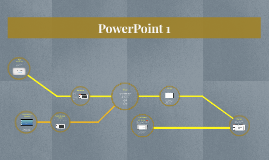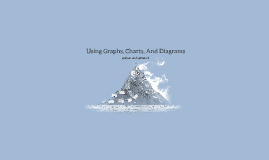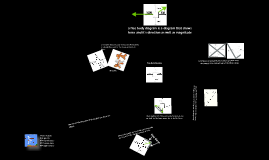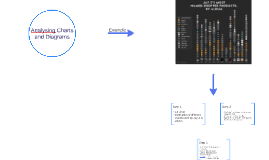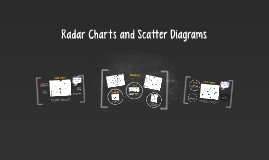Group 4 Charts and Diagrams
Transcript: Goal: To stop the undue influence of money from corporations, the wealthy, and third party sources in federal elections, while strengthening the democratic election process. Plan: Propose and pass a new amendment to the Constitution which clearly outlines the federal voting process, voting rights as well as permanently restrict and/or stop all but private citizens from donating moderate sums to candidates or political parties Criterion 1: Steer federal elections back toward a more purely democratic affair to help strengthen our government and return confidence in our system of government. How Criteria Meets Plan: By passing this amendment, and limiting outside influence or corruption from the vast financial power of corporations and the wealthy, peoples opinions about government will change. It will also facilitate the need for candidates to actually campaign to the masses, and then follow through with their promises, by representing the constituents whom they are responsible to. Criterion 2: The second criterion is to remove the ability of the wealthy and corporations via lobbying to influence politicians during elections and while in the course of their duties. How Criteria Meets Plan: Place a permanent limit on the all monetary, material, or donation of services by any private citizen to a total of $10,000 US annually. This information will be public record and anonymous donations would be prohibited. Criterion 3: Remove Corporate financial influence from elections and ties to federal politicians both directly and through 3rd party fundraising systems to influence candidacy and elections. How Criteria Meets Plan: : Permanently bar by amendment to the US constitution all monetary donations, material donations, or donations of time/services to any candidate for election to a federal seat, which originate from a public or private corporation of any type. Criterion 4: Stop the influence of all 3rd party political fundraising entities such as PACs, SuperPACs, trusts, and political party general donation pools, or any 3rd party organization which is not currently deemed a public charity under Section 501(c) of federal tax code. How Criteria Meets Plan: Permanently bar by amendment to the US constitution, anonymous donations, or financial support from all but a public donation, from a singular US citizen. This includes through financial pools such as PACs, SuperPACs, trusts, political party general donations, or any 3rd party organization which is not currently deemed a public charity under Section 501(c) of federal tax code. Super PACs Spending Group Independent Expenditures Viewpoint Total Raised Restore Our Future- $142,097,336 Conservative $153,741,731 American Crossroads- $104,746,670 Conservative $117,472,407 Priorities USA Action-$65,166,859 Liberal $79,050,419 Majority PAC- $37,498,257 Liberal $42,121,541 House Majority PAC- $30,470,122 Liberal $35,844,951 Freedomworks for America- $19,636,548 Conservative $23,453,198 Winning Our Future- $17,007,762 Conservative $23,921,705 Club for Growth Action- $16,584,207 Conservative $18,253,913 Ending Spending Action Fund- $13,250,766 Conservative $14,169,830 Congressional Leadership Fund- $9,450,223 Conservative $11,286,590 Independence USA PAC- $8,230,454 Liberal $10,004,235 Now or Never PAC- $7,760,174 Conservative $8,250,500 Women Vote!- $7,749,991 Liberal $9,834,165 Group 4 Group Supports/Opposes Independent Expenditures Viewpoint Total Raised Restore Our Future supports Romney $142,097,336 Conservative $153,741,731 American Crossroads $104,746,670 Conservative $117,472,407 Priorities USA Action supports Obama $65,166,859 Liberal $79,050,419 Majority PAC $37,498,257 Liberal $42,121,541 House Majority PAC $30,470,122 Liberal $35,844,951 Freedomworks for America $19,636,548 Conservative $23,453,198 Winning Our Future supports Gingrich $17,007,762 Conservative $23,921,705 Club for Growth Action $16,584,207 Conservative $18,253,913 Ending Spending Action Fund $13,250,766 Conservative $14,169,830 Congressional Leadership Fund $9,450,223 Conservative $11,286,590 Independence USA PAC $8,230,454 Liberal $10,004,235 Now or Never PAC $7,760,174 Conservative $8,250,500 Women Vote! $7,749,991 Liberal $9,834,165 AFL-CIO Workers' Voices PAC $6,331,541 Liberal $21,855,151 Texas Conservatives Fund opposes Dewhurst $5,872,431 Conservative $6,364,054 Service Employees International Union $5,310,732 Liberal $16,264,036 Planned Parenthood Votes $5,039,082 Liberal $6,446,014 Independence Virginia PAC opposes Kaine $4,921,410 Conservative $5,173,500 YG Action Fund $4,722,335 Conservative $5,948,567 Make Us Great Again supports Perry $3,959,824 Conservative $5,607,881 Endorse Liberty $3,580,138 Conservative $3,937,582 Freedom PAC supports Mack $3,445,126 Conservative $3,845,649 Florida Freedom PAC $3,269,519 Liberal $5,995,043 National Assn of Realtors $3,163,667 $3,199,961 Fair Shair Action $2,924,617 Liberal $5,522,291 Group Supports/Opposes Independent Expenditures Viewpoint






